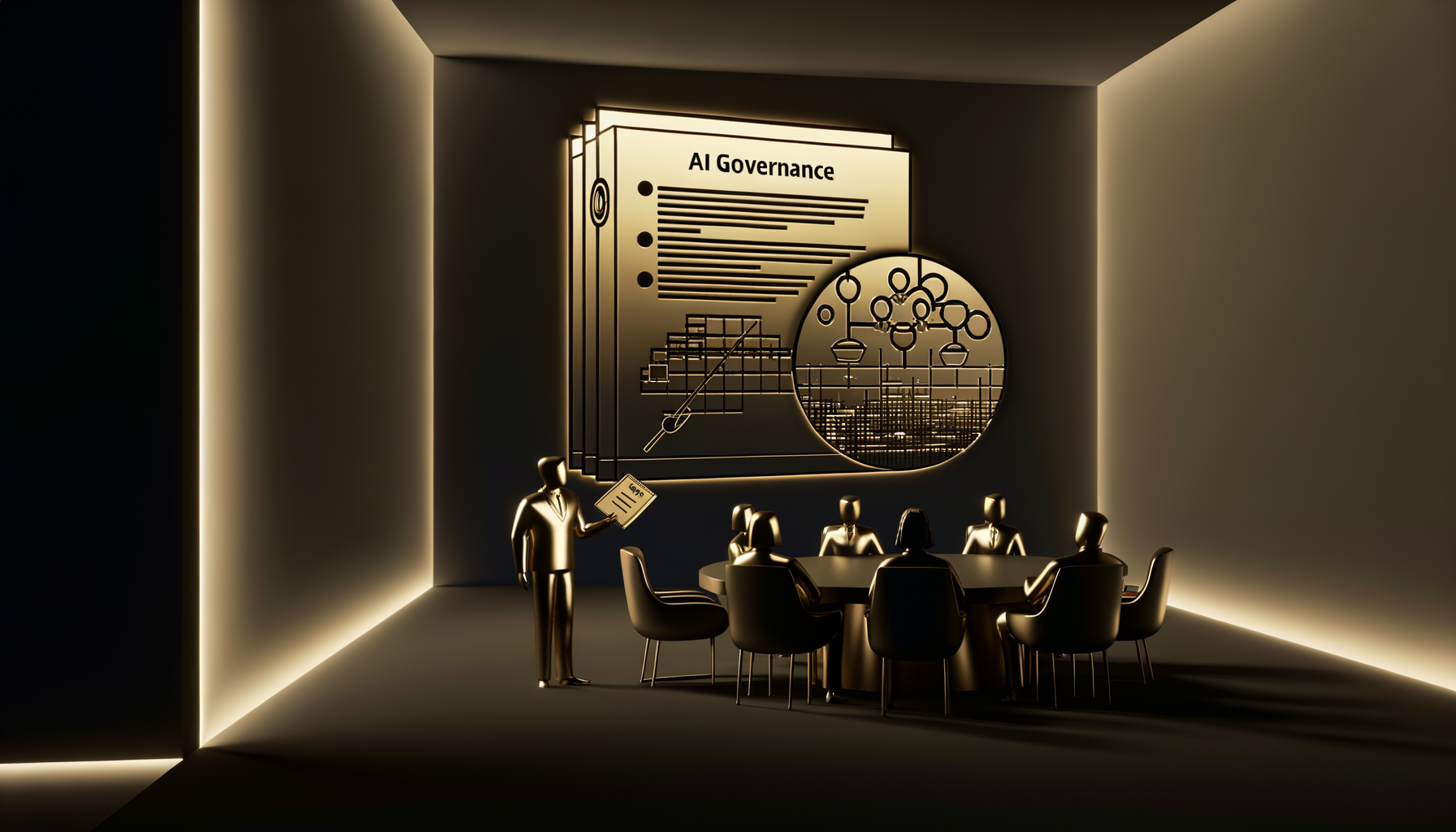If you think a compliance checklist will shield your AI from Europe’s coming storm, think again—your greatest dangers are the ones regulators don’t foresee. Enterprises deploying AI are about to enter the most unpredictable risk landscape yet—are you truly prepared?
The Countdown Begins: What the EU AI Act Really Means for AI Deployments
In August 2025, the European Union’s AI Act will become enforceable law. If you work with large-scale AI systems, GDPR’s early days will look quaint by comparison. The Act targets general-purpose AI systems specifically, including foundational models and advanced deployments in enterprise environments. The rules? Radical transparency, active risk mitigation, and new obligations for systemic risk—many you’ve never encountered before.
Transparency on Steroids: Why Existing Governance Doesn’t Cut It
The EU AI Act moves far beyond ‘black box’ explainability. Now, providers and deployers of general-purpose AI must not only document and test their models, but also actively provide usage instructions and disclose model capabilities—and limitations—downstream. Imagine exposing the crown jewels of your AI stack, end-to-end, under regulatory scrutiny and to partners.
The checklist approach will not save you—the AI Act’s transparency rules demand deep operational change now, not later.
For multinationals and vendor ecosystems, this means unprecedented documentation, disclosure, and audit exposure across the entire lifecycle of your models. It’s not simply about technical transparency but about controlling adverse downstream impacts.
Systemic Risk: Preparing for the Redefinition
Beyond transparency, the AI Act introduces the notion of “systemic risk” from general-purpose AI. It’s not just what your AI can do, but what it enables others to do—at scale and beyond your direct control. This shift makes every deployment both a compliance challenge and a potential node in a global risk network.
- Model misuse: Regulators expect you to account for unpredictable usage outside intended boundaries.
- Emergent behavior: You are accountable for adverse outcomes from model interactions you haven’t foreseen.
- Supply chain: You’re responsible for risks introduced by upstream or third-party components.
The Real-World Implications?
Providing a general-purpose model to partners is no longer a hands-off affair. You’ll need ongoing risk monitoring, response playbooks, and risk-point documentation not only for your system but for every meaningful downstream use case. This changes every procurement and partnership in your pipeline.
The Cyber Threat Landscape Has Shifted: AI as Both Target and Weapon
If regulatory risk is daunting, cyber risk may be existential. AI has changed how threats are generated, targeted, and executed. Most regulatory regimes—including the EU’s—are not keeping pace with fast-evolving AI-powered attacks.
Emerging AI-Driven Attacks: New Vectors, New Stakes
- Adaptive DDoS: AI directs real-time, dynamic attack traffic patterns, evading typical mitigation strategies.
- Algorithmic phishing: LLMs craft hyper-realistic, context-driven spear phishing at enterprise scale.
- Data poisoning: Attackers target training pipelines to insert subtle, undetectable manipulations with vast downstream impact.
- Automated vulnerability discovery: AI scans for and weaponizes software flaws more quickly than defenders can patch.
Each attack surface exists—right now—under the nose of compliance teams focused on regulatory checkboxes. Adversaries are not waiting for August 2025; your front line has already moved.
For leaders responsible for AI, the greatest risk is assuming compliance is enough—it isn’t.
Beyond Compliance: A Blueprint for True AI Risk Management
1. Make Risk Visibility Proactive, Not Reactive
Map your AI supply chain comprehensively, including upstream and downstream dependencies. Move beyond static documentation: establish real-time risk monitoring for emergent behaviors, data drift, and potential security threats. Treat model outputs as living, evolving artifacts demanding continuous oversight.
2. Operationalize Transparency: From Disclosure to Response
- Document, but also Disseminate: Ensure disclosures reach all stakeholders and that updates are enforced across business units.
- Audit-Ready at Any Moment: Establish audit trails and logging from development through deployment. Design for modular red-teaming and scenario-based stress testing.
- Downstream Responsibility: Track model handoffs—if your model is being adapted or fine-tuned, you are still responsible for risk mitigation and corrective channels.
3. Get Serious About AI-Powered Cybersecurity
Old playbooks cannot counter new AI-driven threats. Integrate adversarial testing, anomaly detection, and proactive incident response into your AI lifecycle. Partner not just with compliance, but with cyber experts versed in AI weaponization tactics.
Strategies That Work
- Blend threat intelligence and model interpretability tools to spot unusual patterns.
- Simulate real-world attack scenarios with red-teams using adversarial AI.
- Continuously monitor for evidence of drift, data leakage, or model inversion attacks in production.
What Enterprises Must Do Now: The Real Preparation
Practical readiness is not just drafting a compliance document. Top-performing organizations are investing in:
- Cross-functional AI governance teams (compliance, security, engineering, legal) with a mandate to identify, escalate, and resolve systemic AI risks
- Dynamic risk registry that logs all known and emerging threats, monitored weekly
- Proactive disclosure and communications playbooks for regulatory, partner, and customer audiences
- End-to-end model lifecycle traceability—knowing who touched what, when, and how, across all environments
- OSE (Outside-In Security Evaluation) by threat actors and defenders to stay one step ahead of AI-powered cyber threats
The race isn’t just to comply—it’s to prove your AI deployments are resilient in a hostile, fast-changing world. Regulators will not go easy on organizations who treat this as a checkbox exercise. Examiners will look for evidence of living, breathing, sustained risk management.
Act now: Those who lead on transparency and AI cyber-resilience will set the benchmarks regulators use for years to come.
The Future: Collaboration, Not Isolation
The EU AI Act’s reach means your models are never ‘just yours’ anymore. Modern AI risk is systemic, cross-border, shared. Prepare to work with regulators, partners, and domain peers not just to adapt but to actively define responsible general-purpose AI deployment. Companies that lean into cross-industry and cross-discipline partnerships will earn trust where mere compliance cannot.
Questions Every CTO and CISO Must Ask by Q4 2024
- Which general-purpose AI models do we develop, use, or supply that may trigger EU AI Act requirements?
- Do we have full transparency and downstream accountability mechanisms in place—today—and are they independently verifiable?
- Are our cybersecurity controls adapted to AI-powered attack methods, and have we run recent adversarial simulations?
- Who, outside the compliance team, owns real-time risk identification and response for AI deployments?
- In a system-level failure caused by model misuse, are we ready to disclose and remediate in ways that satisfy both regulators and our own risk appetite?
Conclusion: Compliance Is The Floor, Not The Ceiling
If you’re deploying general-purpose AI at scale, the new EU requirements are not the high bar—they are baseline table stakes. The organizations that invest early in continuous transparency, proactive risk management, and cyber-resilient AI operations will not just dodge sanctions, but will also outpace competitors in trust and innovation. Treat the August 2025 deadline as your opening move—not the finish line.
The organizations that will thrive under the EU AI Act are those who move from box-ticking toward true operational mastery of systemic risk and AI-enabled cyber defense—starting now.





